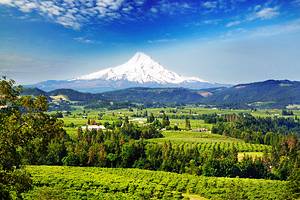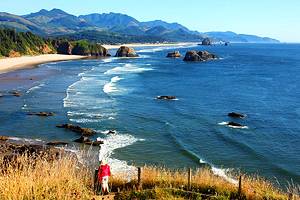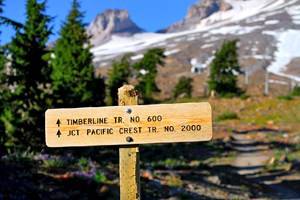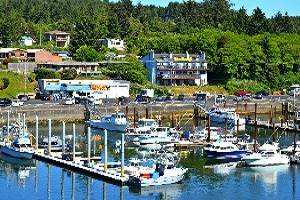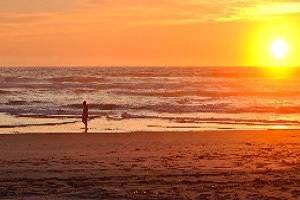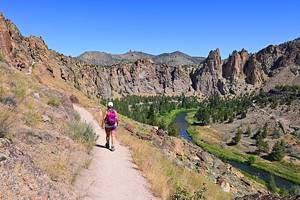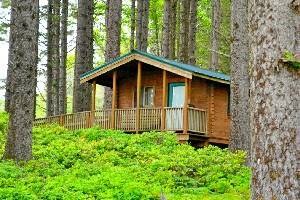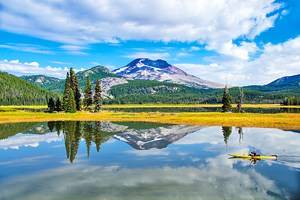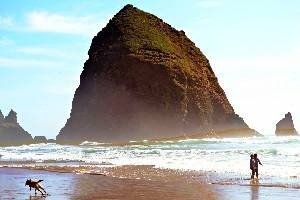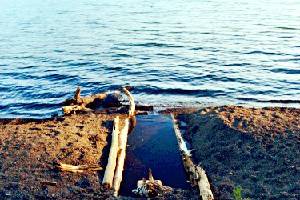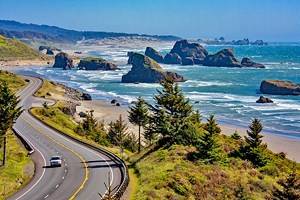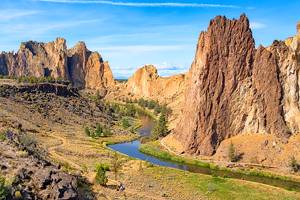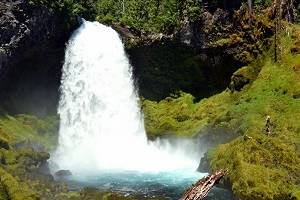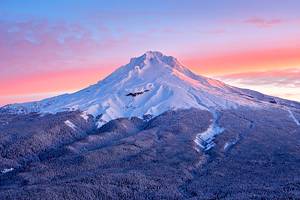National Parks in Oregon
Crater Lake is Oregon's only national park. But Oregon has several national park units, including National Monuments and National Historical Parks. The state is also home to more than one notable National Recreation Area operated by the U.S. Forest Service. And all of these sprawling public lands dive deep into the Oregon landscape.
National park units in Oregon range from the deepest river gorge in North America to Marble Halls underground. Other dynamic areas of interest include miles upon miles of coastal sand dunes and a fossil collection dating back 50 million years. And waiting to be explored are more than one ancient caldera, a.k.a. the remnants of an erupted volcano.
Figure out for yourself why the Beaver State is one of the best for outdoor exploring with our list of the top national parks in Oregon.
- Crater Lake National Park
- Lewis and Clark National Historical Park
- Oregon Caves National Monument and Preserve
- John Day Fossil Beds National Monument
- Newberry Volcanic National Monument
- Nez Perce National Historical Park
- Fort Vancouver National Historic Site
- Oregon Dunes National Recreation Area
- Columbia River Gorge National Recreation Area
- Hells Canyon National Recreation Area
- Map of National Parks in Oregon
Crater Lake National Park
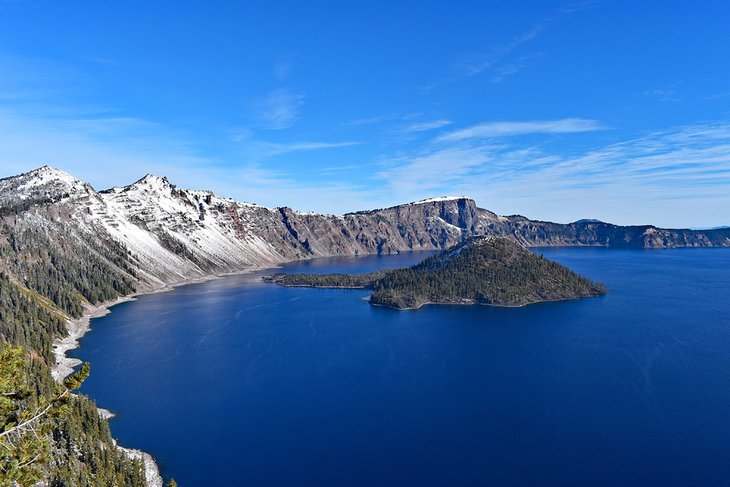
Crater Lake is Oregon's only designated national park. It's also a must-see place to visit for outdoor enthusiasts. The sparkling blue waters of this massive "crater" lake occupy an ancient caldera – the result of Mount Mazama erupting over 7,000 years ago.
With depths reaching nearly 2,000 feet, Crater Lake is the deepest lake in the United States. Only rainwater and snowmelt contribute to its dazzling depths, giving the water its signature hue. And standing at the edge of this geological wonder leaves an impression on anyone visiting.
A typical spot to aim for in the summer is the Rim Village Visitor Center on the southern rim. Detailed park information is available at the visitor center, and nearby paved trails provide a fantastic view. The nearby Crater Lake Lodge offers an iconic and historic place to stay near the crater's edge.
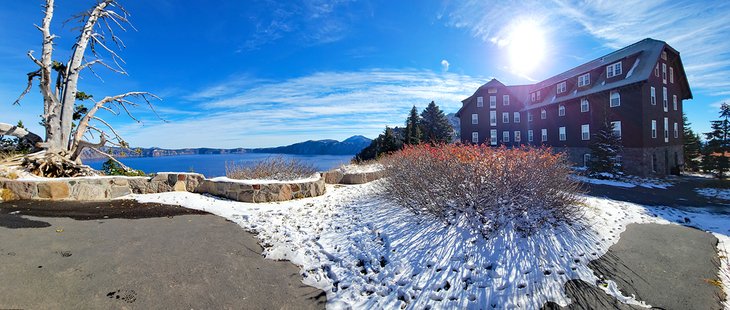
Crater Lake is open throughout the year and has a notoriously long snowy season. Vehicle access is more limited during the winter months. Many visitors in the winter often opt for cross-country skis or snowshoes to explore the unplowed Rim Drive.
Lewis and Clark National Historical Park
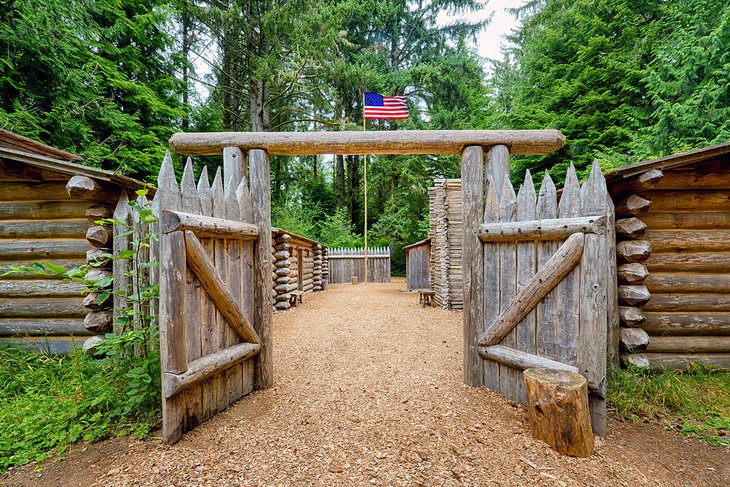
Lewis and Clark National Historical Park encompasses several units near the end of the Columbia River separating Oregon and Washington. These units commemorate the time spent here by the Corps of Discovery. They include lush hiking trails, interpretive sites, and reconstructed winter forts – all transporting visitors back to the early 1800s.
Fort Clatsop & Visitor Center is one of the first places to visit. This reconstructed fort and historic site are less than a 15-minute drive south of Astoria, on the other side of Young's Bay. It's the site of the Corps of Discovery's winter encampment between 1805 and 1806, and today, it's the park's principal attraction.
Costumed actors inhabit the replica Fort Clatsop and the visitor center throughout the summer months, demonstrating period-authentic ways of living. These actors and the interpretive information set the scene for the living conditions of the Corps of Discovery.
Several hiking trails also pass through the area, including the Fort-to-Sea Trail, concluding at Sunset State Beach.
Oregon Caves National Monument and Preserve
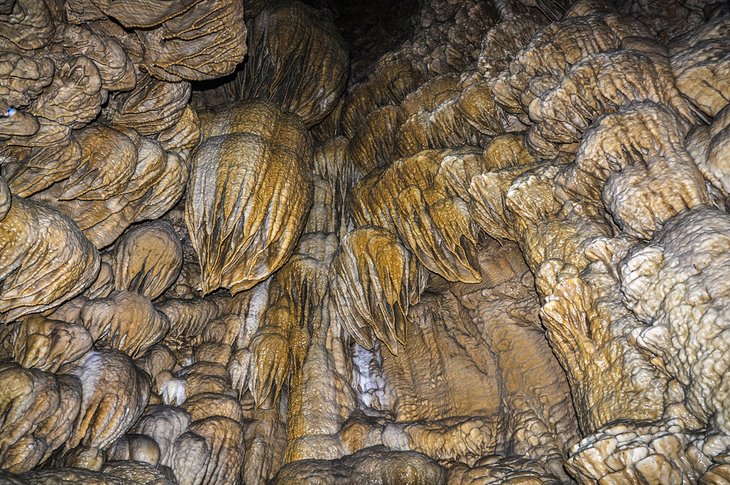
This National Monument and Preserve is within the Siskiyou Mountains of southern Oregon, less than 10 miles from the California border. It's a relatively small national park unit, but it protects two wondrous habitats. These environs include an old-growth forest aboveground and an intricate cave system beneath, known as Oregon's Marble Halls.
A guided tour is the only way to experience the underground at Oregon Caves. The monument offers tours seasonally between late March through early September. Three tours are available, and the Discovery Tour is the most popular. A candlelight tour and an off-trail cave tour are also available.
The 90-minute Discovery Tour dives deep into the cave system, passing by several features like flowstones and soda straws. The cave ceiling dips as low as 45 inches along the tour, and participants encounter over 500 steps. It's a moderate challenge navigating the cave halls, and not suited for every hiker.
Anyone visiting the park should stop at the Illinois Valley Visitor Center first, located on Highway 199 at the turnoff for the monument. Here, day-of cave tour tickets and updated information about park conditions are available.
It's approximately a 45-minute drive from the visitor center to the monument, with few amenities along the way.
John Day Fossil Beds National Monument
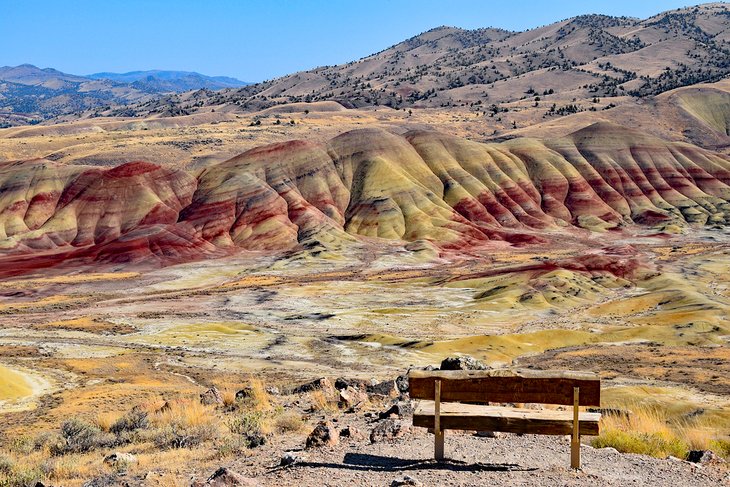
John Day Fossil Beds National Monument is in central Oregon, approximately halfway between Portland and Boise, Idaho. The monument is part of the larger John Day River Basin – a rugged and relatively remote part of the state with its unique geology on display.
This area is also a hot spot for recreational activities, ranging from mountain biking to rafting the John Day River.
The biggest draws to John Day Fossil Beds are its immense rock formations and a vast collection of fossils spanning the last 50 million years. The monument is split between the Clarno Unit, Painted Hills Unit, and Sheep Rock Unit. Each unit has a small collection of hiking trails navigating eye-catching environments.
A few visitor favorites include the Palisades in the Clarno Unit or the undulating colors of the Painted Hills. It's approximately a one- to two-hour drive on secondary roads between units, and visiting all three in a single day is not recommended.
While the monument doesn't offer any campgrounds or lodging, several lodging options are available in the region.
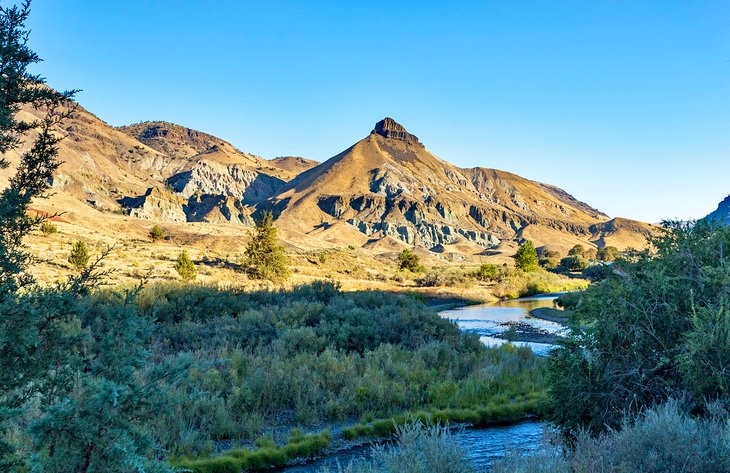
The best place to see and learn about fossils is the Thomas Condon Paleontology Center in the Sheep Rock Unit. This modern museum has several fossils with interpretive information and immersive displays. It's also home to a fully functioning paleontology lab with glass-lined walls for laboratory viewing.
Newberry Volcanic National Monument
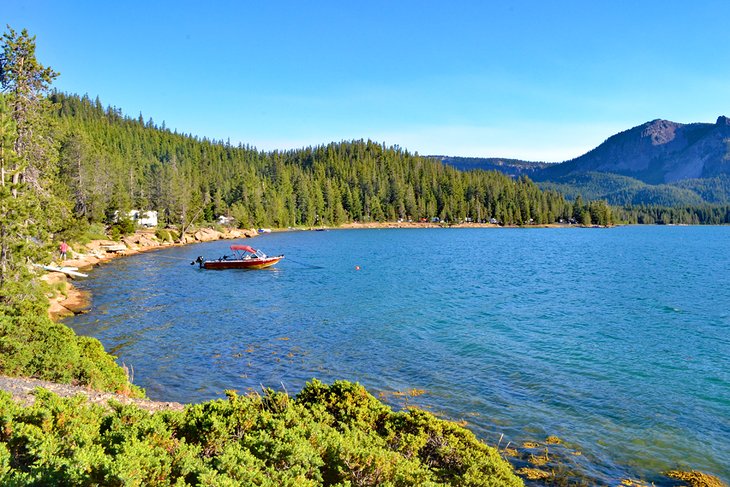
Newberry Volcanic National Monument encompasses over 54,000 acres of Lava Lands in central Oregon, less than 30 miles south of Bend. This vast expanse of volcanic landscapes became a National Monument in 1990. Its popularity hasn't peaked like other geothermal destinations in the West. Still, with distinct steaming attractions, the area is primed for adventure and travel.
Popular things to do at this active volcano include hiking, bicycling, boating, and camping. Other everyday pursuits include hot-spring soaking, fishing, and waterfall chasing. Cross-country skiing and snowshoeing are typical throughout the winter. And a single day at Newberry may consist of hot springs in the morning, lava caves by the afternoon, and a summit drive to Paulina Peak for sunset.
Lava Lands Visitor Center is a recommended first place to visit and one of the first stops in the monument coming from Bend. Here, interpretive information does easy work of illustrating the dynamic environment and its unique geological status. Rangers and other volunteers are also on-site to assist in recommending hiking trails and places to visit.
Nez Perce National Historical Park
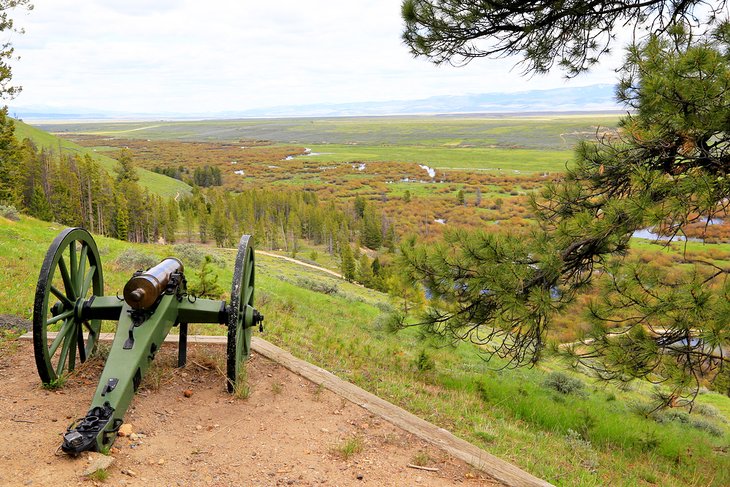
Nez Perce National Historical Park tells the story of the Nimiipuu, or Nez Perce people, throughout 38 sites across four states. Many sites are near the intersection of Washington, Idaho, and northeast Oregon. The region includes the Spalding Visitor Center, eleven miles east of Lewiston, Idaho. This welcome area is an excellent first place to visit and learn more about the park's history.
Other cultural sites nearby include Canoe Camp; White Bird Battlefield; and the Heart of the Monster, the location of a Nez Perce creation story, where the remnants of a monster killed by Iceye'ye (Coyote) remain today.
One of the most prominent sites in Oregon is the Old Chief Joseph Gravesite, located near current-day Joseph and the Wallowa Mountains.
The Nez Perce National Historic Trail connects many sites with a continuous footpath steeped in a tumultuous Western history. This 1,170-mile trail spans from Wallowa Lake in Oregon to Bear Paw Battlefield near Chinook, Montana. It follows the steps of the 1877 flight of the Nez Perce following escalating battles and bloodshed.
Fort Vancouver National Historic Site

The mainstay of Fort Vancouver National Historic Site is in Vancouver, Washington, across the Columbia River from Portland. But small parts of the park, including the McLoughlin House and Barclay House, are in Oregon, located south of Portland in Oregon City.
The McLoughlin House was the home of the retired Chief Factor of Fort Vancouver, Dr. John McLoughlin. Dr. McLoughlin oversaw the vast fur trading industry at the fort throughout the early 1800s. His legacy continued after retirement, eventually becoming mayor of Oregon City and contributing several enterprising and charitable ventures to the area. This civic-mindedness eventually led to the doctor's nickname, the "Father of Oregon."
The house was moved to its current location in 1909, and visitors today take self-guided tours of its interior and exterior. Interpretive information abounds, detailing the life and legacy of Dr. John McLoughlin and the other men and women that lived at the abode.
Oregon Dunes National Recreation Area
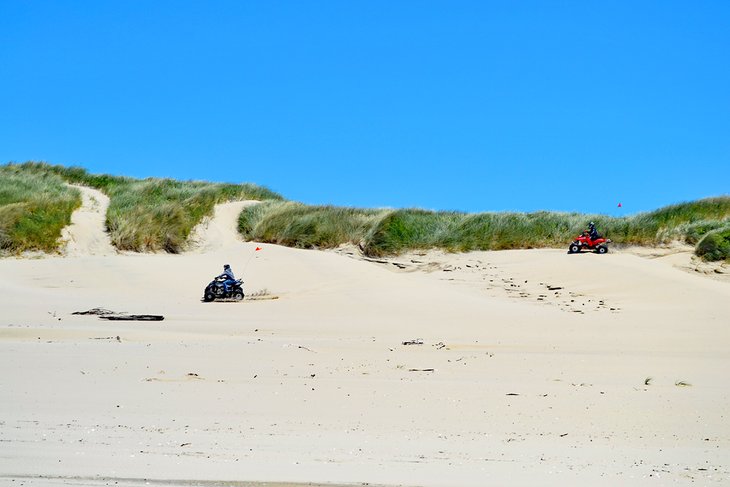
Oregon Dunes National Recreation Area spans 47 miles between Coos Bay and Florence on the southern Oregon coast. This sprawling expanse is part of Siuslaw National Forest. It comprises one of the world's largest tracts of temperate coastal dunes. This shifting landscape invites all types of recreation and ways to explore.
The two most common ways to travel the dunes are hiking and off-road driving. Visitors with Off-Highway Vehicles (OHVs) have several access points.
Similarly, hikers have plenty of trailheads deep enough into the dunes to drown out any motor noise.
The South Jetty of the Siuslaw River near Florence is one popular access point, with separate areas for OHV use and day hiking. The Siltcoos River near Dune City is another popular spot for OHV drivers.
Hikers gather at other sites, like Oregon Dunes Day Use Area, where no motorized vehicles are allowed.
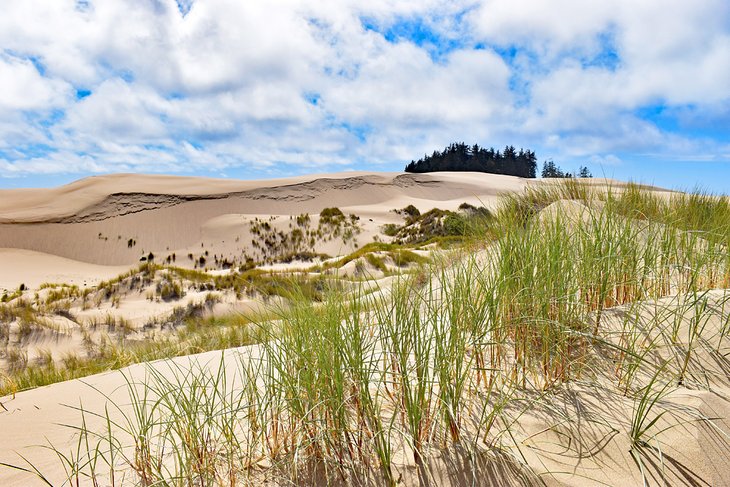
The John Dellenback Trail is a classic dune hiking trail for those looking to explore on foot. Its trailhead is less than 10 miles south of Reedsport and Umpqua Lighthouse State Park. The route encompasses either an easy self-guided interpretive loop or a shifting 2.7-mile trip to the beach.
Columbia River Gorge National Recreation Area
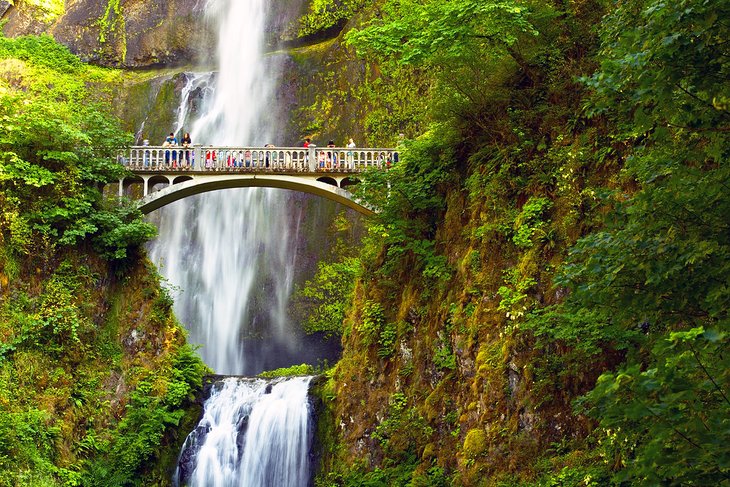
The Columbia River Gorge spans over 80 miles, separating Oregon from Washington with spectacular scenery. Both riverbanks offer several recreation outlets, though the Oregon side arguably provides the most things to do. Stretching from Troutdale to the Deschutes River, the "Gorge" is one of the most famous outdoor playgrounds in the state.
Interstate 84 runs the length of the Columbia River Gorge on the Oregon side. However, the Historic Columbia River Highway is the preferred method of travel for leisure and adventure. This bicycle-friendly route links waterfalls, viewpoints, and plenty of places to pull over and dive into the lush landscape.
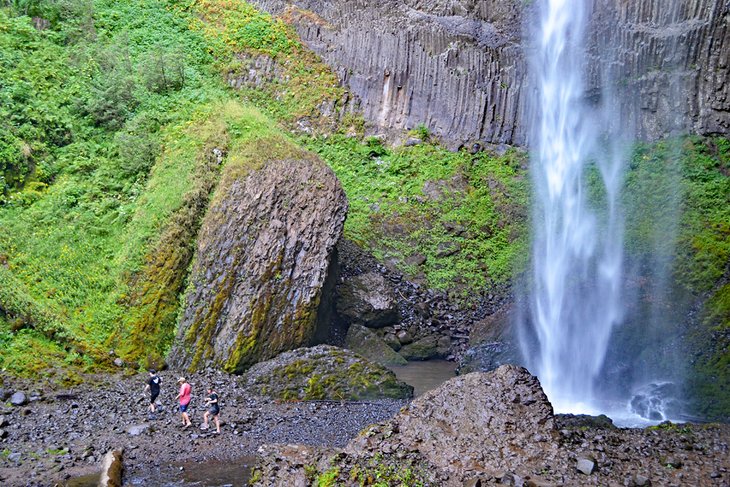
The Columbia River Gorge is known for many things, including windsurfing, vista houses, and a Bridge of the Gods. But waterfalls are the principal attraction in the gorge, with a dense concentration of Oregon's best waterfalls. Multnomah Falls is perhaps the most notable, as this two-tier waterfall drops over 620 feet.
Hells Canyon National Recreation Area
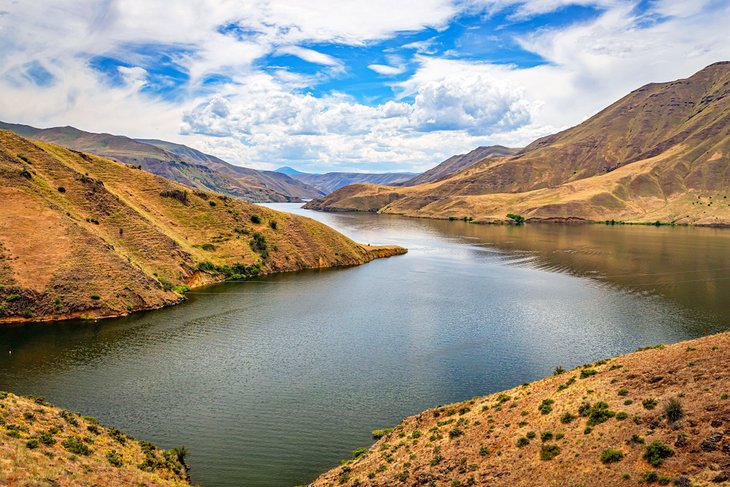
The mighty Snake River slithers through Southern Idaho before heading north to form the border with Oregon. And on this journey ending at the Columbia River, the Snake carves the deepest river gorge in North America, best known today as Hells Canyon.
Wallowa-Whitman National Forest oversees Hells Canyon National Recreation Area, spanning over 650,000 acres in Oregon and Idaho. Big adventures and a bigger sense of awe come from this massive canyon, with nearly 8,000 feet of elevation change at its deepest. In comparison, the Grand Canyon reaches a maximum depth of 6,000 feet.
Whitewater rafting the Snake River, scenic drives on the Hells Canyon Scenic Byway, and backpacking trips are just some of the fun to be had in this remote part of the country. Endeavors like day hiking, fishing, and spending the night at a Forest Service campground are also popular.


